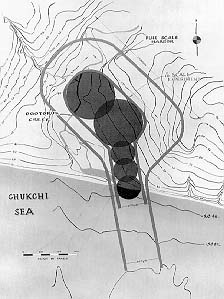 |
| War Memorial Court, commonly known as The Pylons. |
 |
| The Highty Tighties, Circa 2008 |
But there are always two sides to a story.
Current HTs and HT alumni I met during my time would talk about the early days of the band and the Corps of Cadets as well as the glorious 1950s and 60s, but not much about anytime afterwards. In fact, the few stories I remember about the HTs in this "afterglow" period are about how the band, and the Corps of Cadets in general, sank to a less than respectable status in the university.
Granted, part of this "fall from grace" tale is hyperbole.
Nevertheless, it is impossible to ignore the fact that from the 1970s onwards (the period that exactly coincides with the "fall from grace") Virginia Tech's shift from an all white, predominantly male military school, to an all inclusive modern institution, changed the role, and the fortunes, of the Corps of Cadets.
In reality, the "material reality" of what Virginia Tech was and is and the symbols used to describe both the legacy and the "afterglow" of the HTs are in fact the same story. Like a mixture of oil and water left to sit, they were once merged together.
 |
| Nucla, Colorado between 1910 and 1920 |
Uravan.
As the final project for Advanced Science Communication (the blog this class is for) I took a look at how proponents and opponents of Pinon Ridge frame the legacy of Uravan, both in the positive and negative sense, in their arguments for what the future of the uranium industry should be.
What I found was, despite the rhetoric and emotion associated with both sides, both were portraying Uravan accurately, if you accounted the moment in time they spoke of.
 |
| USV Uravan Commissary Circa mid-1940s |
Opponents on the other hand argue that Uravan is the product of unbridled corporate greed and government incompetence. For them, Uravan symbolizes environmental and social ruin at its worst. Materially, this Uravan is not a bustling town, but the complete opposite, a government run environmental cleanup of the worst kind, a Superfund site.
In reality, Uravan is both a place of growth and prosperity, and environmental and social ruin.
 |
| Uravan, 1978 |
Now, after reaching this conclusion I thought to myself: "okay, so what do we do to break this mess up?" It's been five years since Energy Fuels began the process of getting the proper approvals for building Pinon Ridge, and so far its led to a lot of headaches, talking past each other, and more recently, litigation.
 |
| The Paradox Valley, Colorado |
And then it hit me.
Legacy of Conquest
In the revised edition of Patty Limerick's game-changing novel on the history of the American West, she makes an interesting, if not timely, comment about addressing the myths and legacies of the American West:
In countless showdowns and contests, the
romanticized, commercialized, Myth of the West prevailed over my plucky
challenges to it. After defeats beyond counting, a new strategy seemed in
order. Why not try to co-opt the myth and enlist its endless energy for good
causes? Moreover, why not even have fun with it?
At the rate I keep making plugs for Patty Limerick, I must either be trying to get into CU's History Ph.D. program (I am not) or I am becoming like every other scholar of the American West.
Pretty sure its the latter.
Anyways, it struck me that what I had before me was a similar "myth of the west"; both supporters and opponents strongly identified with the notion that you cannot trust the government to look out for your best interests. While each side argued it from a different angle (free market economics versus environmental protection) both reached at some level or another the same conclusions.
Co-opting this notion of distrust may serve to accomplish what legally mandated processes have failed to produce: real discourse. By getting stakeholders on both sides to come out and talk in an environment where they, not the government, are in control, it might be possible to generate discussion that will lead to actual results. Investing power in the people might not only bring them to the table, but encourage them to take responsibility for the future of western Colorado.
.jpg)











